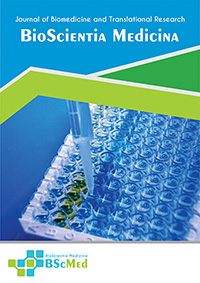Main Article Content
Abstract
Background: Dengue infection remains a significant health concern in Indonesia, with a high mortality rate. Early identification and prediction of severe dengue are crucial for effective management and mortality reduction. The platelet-to-lymphocyte ratio (PLR) has emerged as a potential biomarker for assessing dengue severity due to its association with inflammatory responses.
Methods: This descriptive study included 48 pediatric patients diagnosed with dengue hemorrhagic fever (DHF) and dengue shock syndrome (DSS) at Dr. M. Djamil General Hospital Padang between March and August 2024. Patients were included if they were aged 0-18 years, had a confirmed diagnosis of DHF or DSS, and underwent complete blood count and serological testing for dengue. Patients with chronic diseases or other comorbidities were excluded. Complete blood counts were performed using flow cytometry, and PLR was calculated by dividing the platelet count by the absolute lymphocyte count. Clinical data were obtained from medical records.
Results: The majority of patients were aged 6-18 years (68.8%), with 20 (41.7%) presenting with DHF and 28 (58.3%) with DSS. The median platelet count was lower in DSS patients (26,000/mm3) compared to DHF patients (35,500/mm3). The median PLR was also significantly lower in DSS patients (8.95) compared to DHF patients (15.61). A PLR value <20 was more frequently observed in DSS patients (89.3%) than in DHF patients (75%).
Conclusion: A lower PLR value was associated with more severe clinical manifestations of dengue infection, particularly DSS. PLR can serve as a valuable biomarker for assessing dengue severity, utilizing readily available and cost-effective complete blood count results.
Keywords
Article Details
As our aim is to disseminate original research article, hence the publishing right is a necessary one. The publishing right is needed in order to reach the agreement between the author and publisher. As the journal is fully open access, the authors will sign an exclusive license agreement.
The authors have the right to:
- Share their article in the same ways permitted to third parties under the relevant user license.
- Retain copyright, patent, trademark and other intellectual property rights including research data.
- Proper attribution and credit for the published work.
For the open access article, the publisher is granted to the following right.
- The non-exclusive right to publish the article and grant right to others.
- For the published article, the publisher applied for the Creative Commons Attribution-NonCommercial-ShareAlike 4.0 International License.





